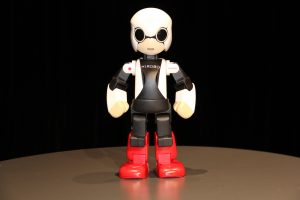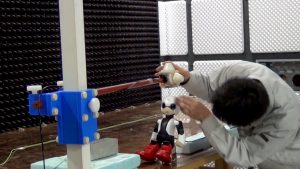Toyota Robonaut cleared for launch
‘Kirobo’ to conduct first-ever Robot-Human Conversation Experiments on the International Space Station
Key Points
- Kirobo, developed in part by Toyota, is successfully cleared to be Japan’s first ‘robonaut’
- Kirobo will take part in the first robot-human conversation experiments aboard the International Space Station (ISS)
- Toyota responsible for voice and face recognition functions that are crucial to the experiments
- Launch is scheduled for 4 August from Tanegashima Space Centre, Japan
- Kirobo passed a range tests to be for flight, including ‘zero G’ simulations and vibration testing
After launch, Kirobo will disembark at the ISS and wait for the arrival of Commander Koichi Wakata late this year. In the Kibo Japanese experiment module, the commander and Kirobo will then take part in the first conversation experiment held between a person and a robot in space.
Toyota’s role in the project focused on Kirobo’s voice and face recognition functions, crucial elements in the conversation experiments that will take place.
During testing, Kirobo successfully passed a range of trials to be accepted as ready for flight. These included a parabolic flight test to examine behaviour in ‘zero G’ conditions, and a vibration test, to ensure he was robust enough to withstand a rocket launch.
Kirobo is one of two humanoid verbal-communication robots developed under the Kibo Robot Project. The other, ‘Mirata’, will act as ground crew, allowing the investigation and solution of any issues that may arise during Kirobo’s time on board the ISS.
Kibo Robot project Website:
Project Timeline (planned)
Aug. 4, 2013 Robot astronaut Kirobo leaves for the ISS
Aug.–Sep. 2013 Kirobo speaks for the first time in space
Nov.–Dec. 2013 Commander Wakata arrives at the ISS
Dec. 2013 Commander Wakata and Kirobo have their first conversation
May–Jun. 2014 Commander Wakata leaves the ISS
Dec. 2014 Kirobo returns to Earth






